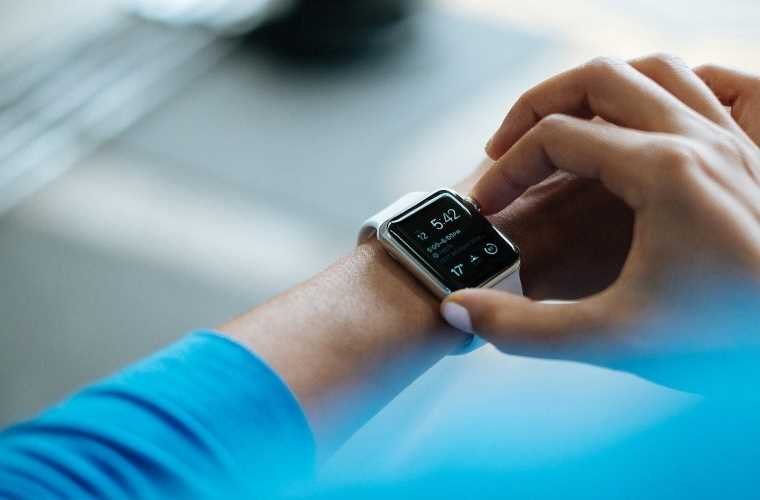In a recently published study, a team of researchers from Colorado University, Boulder have developed a ring-like device that captures heat from the human body and converts it into usable electricity. Life saving devices and wearable gadgets like a Fitbit can pull power from your body and skin.
Designed to be worn on the hand, the device is part of a new technology wave known as thermoelectric generators (TEG). This technology could one day be adapted to fuel internal devices like pacemakers and defibrillators. Moreover, using the human body’s heat energy, wearable electronic devices, like the Apple Watch or Fitbit, can be powered without batteries.
“In the future, we want to be able to power your wearable electronics without having to include a battery,” Jianliang Xiao, a professor of mechanical engineering and one of the study’s co-authors said in a prepared statement announcing their exciting results. “Whenever you use a battery, you’re depleting that battery and will, eventually, need to replace it. [T]he nice thing about our thermoelectric device is that you can wear it, and it provides you with constant power.”
Background: Bye bye batteries?
Over the years, micro-electronic devices like pacemakers and internal defibrillators have been developed to improve or even save human lives. Still, like all other electronics, they are fueled by batteries. Unfortunately, conventional batteries are often made from rare earth metals and other corrosive materials, nearly all of which are not good matches with the human body.
More recently, an entire range of smart wearables like the Fitbit and Apple Watch, cell phones, and other IOT (internet of things) devices have come to the market, dramatically increasing the need for energy on the go. And like those bio-medical devices, this new wave of portable electronics also needs power. Advances in battery technology have helped, but charging them has only added to the growing demand on our aging power grid.
Now, led by Dr. Xiao and his team of researchers have created a device that they hope will lead the way in solving that problem.


Analysis: So How Does my Skin Power my Fitbit?
“I think there were two major challenges,” Dr. Xiao said in an email to The Debrief, describing the many obstacles they would have to overcome when making a device that can capture body heat and turn it into usable electricity. “How to choose appropriate materials that can be integrated into one single device to achieve the optimal mechanical and thermoelectric performances, and [determining] which high-performance thermoelectric materials have those properties.”
That is a problem, he explained, because “these materials are usually ceramics, which are very rigid and brittle. It’s very challenging to design a device with mechanical compliance that can match with (the) human body.”
Ultimately, the team landed on the right combination of a stretchy material that can better adjust to the human body’s natural movement and a liquid metal core to act as the device’s circuitry. “We chose the soft polyimine elastomer as substrate and liquid metal as interconnects to ensure outstanding mechanical compliance and stretching performance,” Dr. Xiao told The Debrief, “so that the device can survive very large deformation and can be worn on the human body.”
That ability to deform is critical, allowing the device’s material to stay attached to the skin where the most heat energy can be captured, heat that is otherwise lost to the surrounding environment. “The idea here is to use thermoelectric devices to convert energy that has otherwise been wasted into useful electrical power. This would add another 5-8% efficiency to other mechanisms, e.g., internal combustion engines, power plants, [along with] human body.”
Does this mean that humans might one-day power everything, like in the 1999 movie The Matrix? Dr. Xiao says no.
“[The] Human body can [only] convert about 25% of food energy into mechanical output, and I don’t have a number for heat generation. But currently, thermoelectric generation efficiency is typically <10%, which is much lower than internal combustion engines.”
Although human heat energy won’t power everything in the future, this type of technology can and likely will generate enough output to power small, wearable, handheld, and even implanted electronic devices. According to the original paper, the device’s outer skin can be equipped with a special material to take advantage of the sun’s heat, further increasing its power generation.
“A wavelength-selective metamaterial film is introduced to the cold side of the TEG to enhance the thermoelectric performance under solar irradiation,” the paper states, “which is critically important for wearable energy harvesting during outdoor activities.”
One other unusual advantage to the ring-like TEG developed by the CU Boulder team is so utterly unexpected that it sounds like something right out of a science fiction movie. If damaged, the generator can allegedly repair itself.
“This device is self-healable,” Dr. Xiao explained, “which means if it’s damaged, the device can heal itself, so you don’t need to replace it.” Although few details on exactly how this “self-healing” works were covered in the original research paper, Dr. Xiao explained it to The Debrief in a follow-up email.
“[It’s] because of the special materials we used,” he wrote. “The substrate elastomer is polyimine, [and] within the polymer network, the chemical bonds can break and reform, known as bond exchange reactions. When you bring two broken pieces of such polymer into physical contact, new bonds can be generated across the interface, which heals the material. In addition to that, we chose liquid metal as the interconnecting material, which could also heal itself after damage.”
Outlook: Will I Get “Extra Steps” if My Body Powers my Fitbit…Or…?
At present, these types of devices can only generate about one volt of energy for every square centimeter of skin they cover. Still, according to their original paper, the model built by Dr. Xiao and his team is modular, meaning they can scale it up from a simple ring to something more extensive like a bracelet or even a full sleeve, dramatically improving its power output.
“Many of the wearable devices [out today] don’t consume a lot of energy,” Dr. Xiao’s email points out, “so our device could potentially be worn on the human body to power wearable devices and IOT technology. We can [also] scale up the size of the device to cover more body surface (e.g., an arm or body trunk) to generate more power.”
As far as other areas where energy generation can be increased, Dr. Xiao says, “thermoelectric materials with higher Seebeck coefficients can be chosen to improve the energy output. Also, designs can be improved to further enhance the energy output.”
Aside from powering a Fitbit and other small devices, the doctor also sees a wide range of applications for TEG like this, particularly industrial ones. “It’s also possible to scale up the device to put on waste heat pipes in industrial settings to convert waste heat into useful electricity.”
Of course, when asked if any such opportunities have presented themselves since his research was made public, the otherwise forthcoming professor was a little more guarded. “We did get some interests in our technology from industry,” he admitted, “but I’m afraid that I don’t have more details to provide at this moment.”
Whatever path Dr. Xiao and his team take from here, the device they developed appears to have unlocked the human body’s potential to power a whole host of devices, and all by using the heat energy already going to waste. It may not be The Matrix, but in a future where energy demands and the environmental impacts from generating that energy will increase, taking advantage of the energy already being lost not only seems like smart science but may make things like tackling that long bike ride or steep mountain trail an act of environmental activism. Or just some good old-fashioned fun.
Join us on Twitter or Facebook to weigh in and share your thoughts. You can also follow all the latest news and exciting feature content from The Debrief on Flipboard, Instagram, and don’t forget to subscribe to The Debrief YouTube Channel and check out The Official Debrief Podcast.

